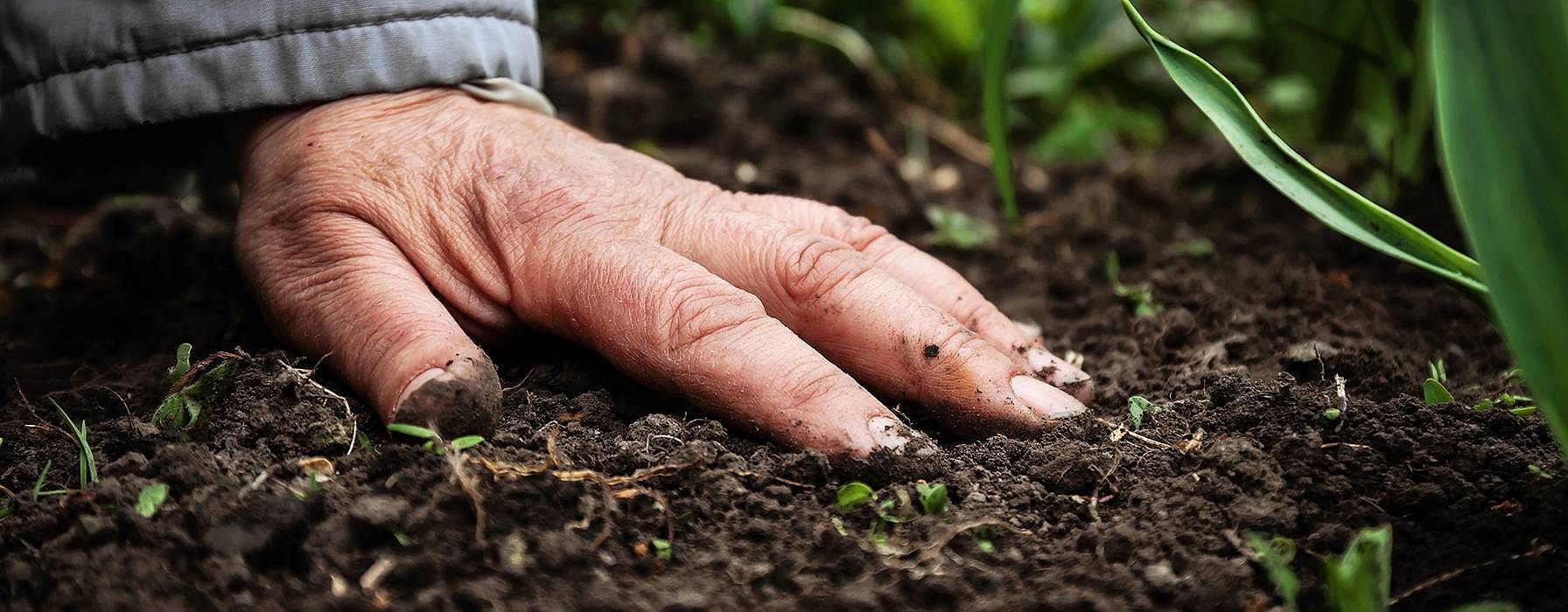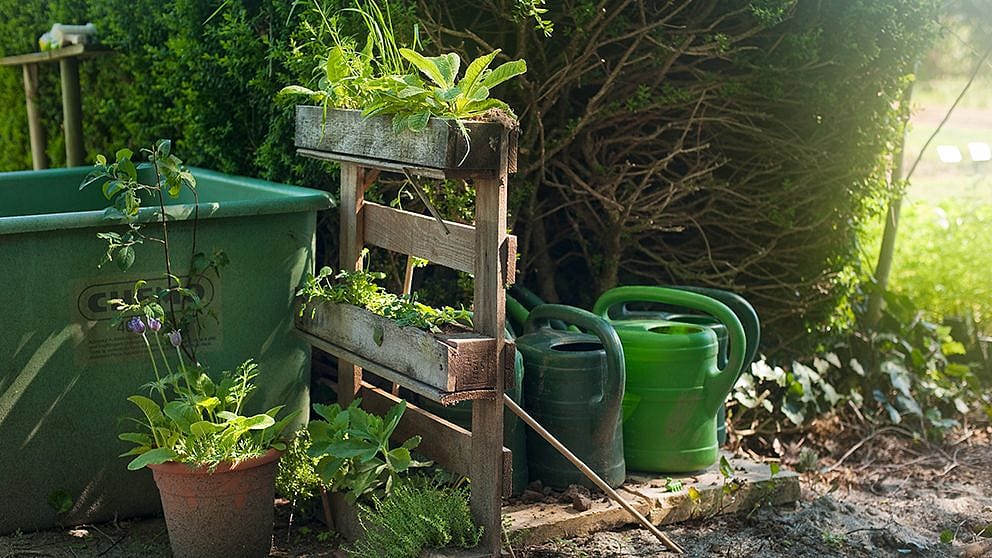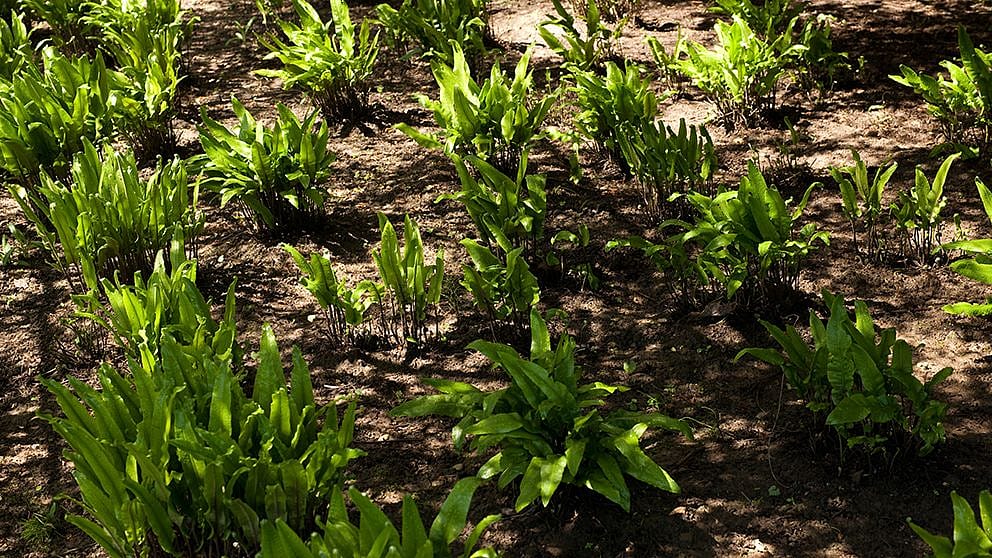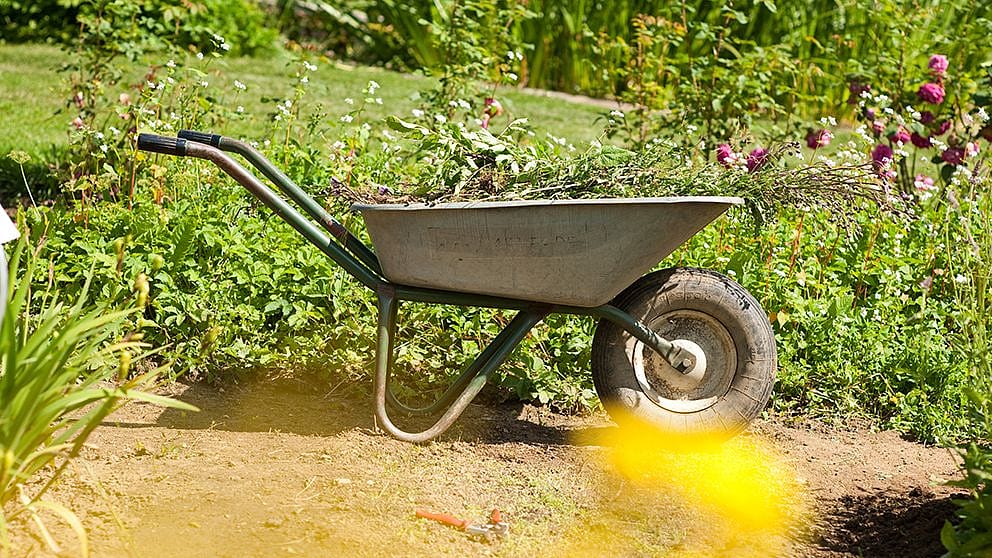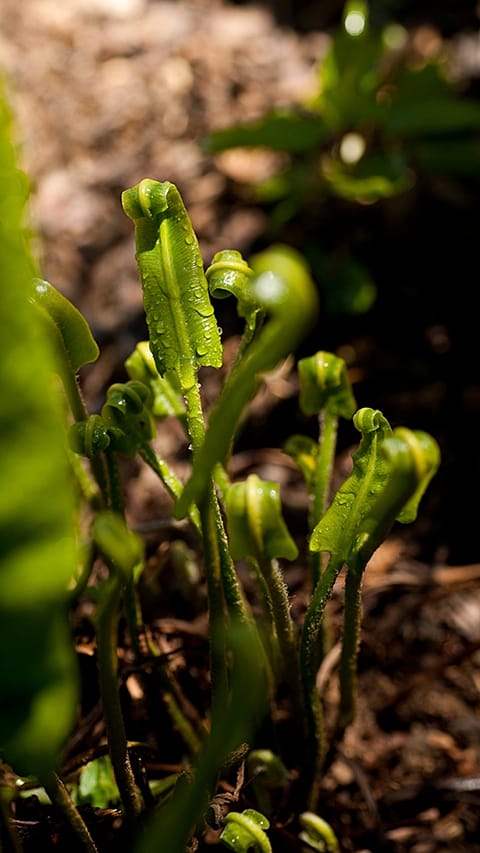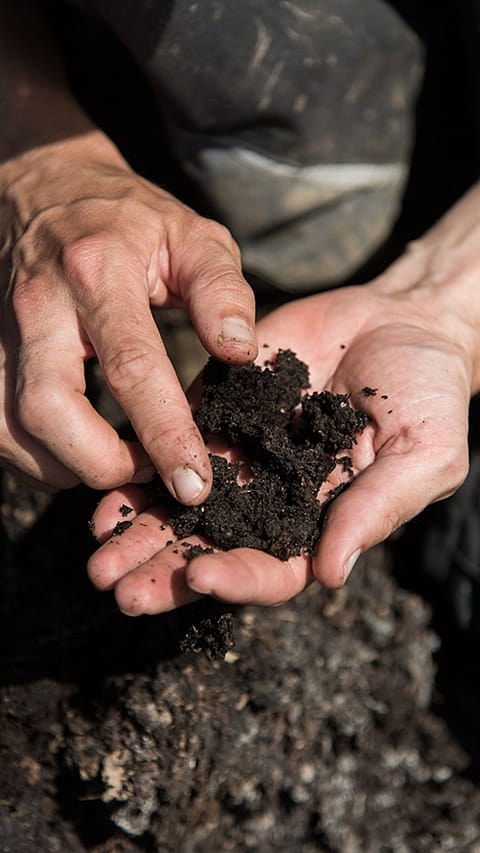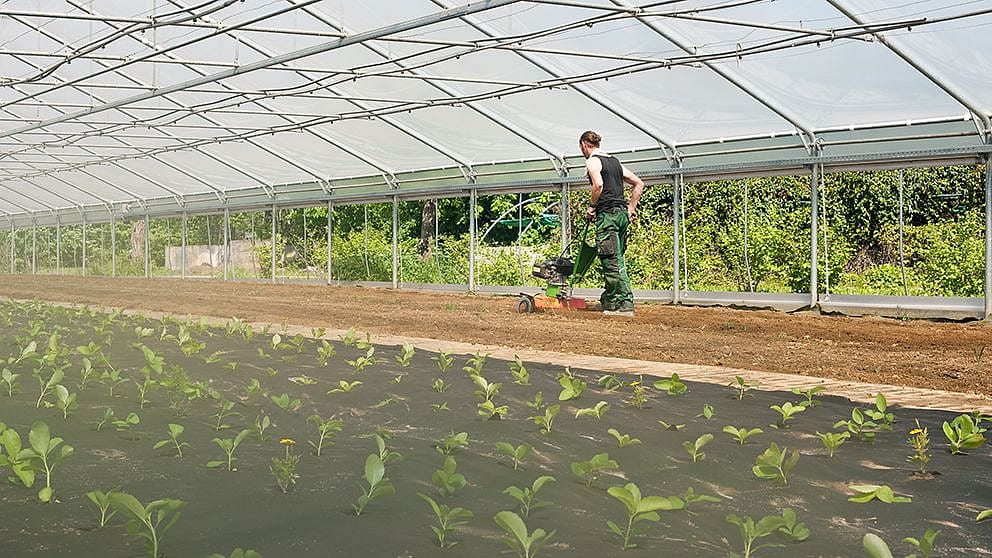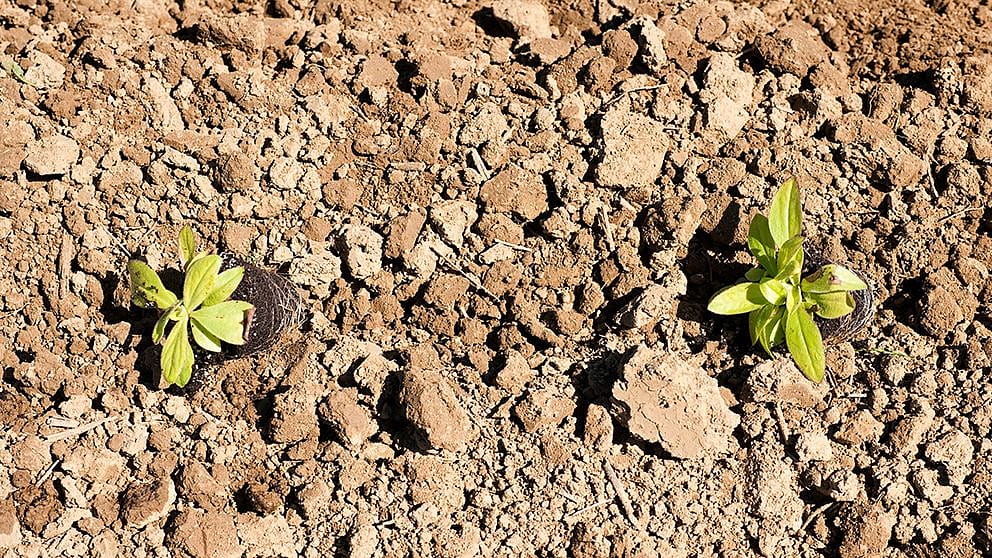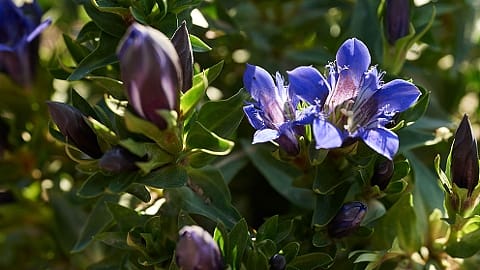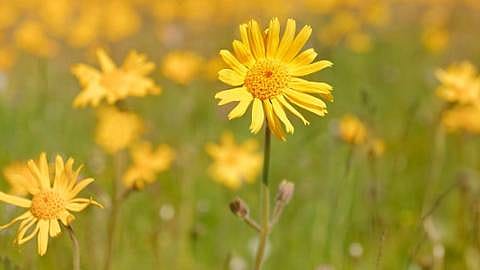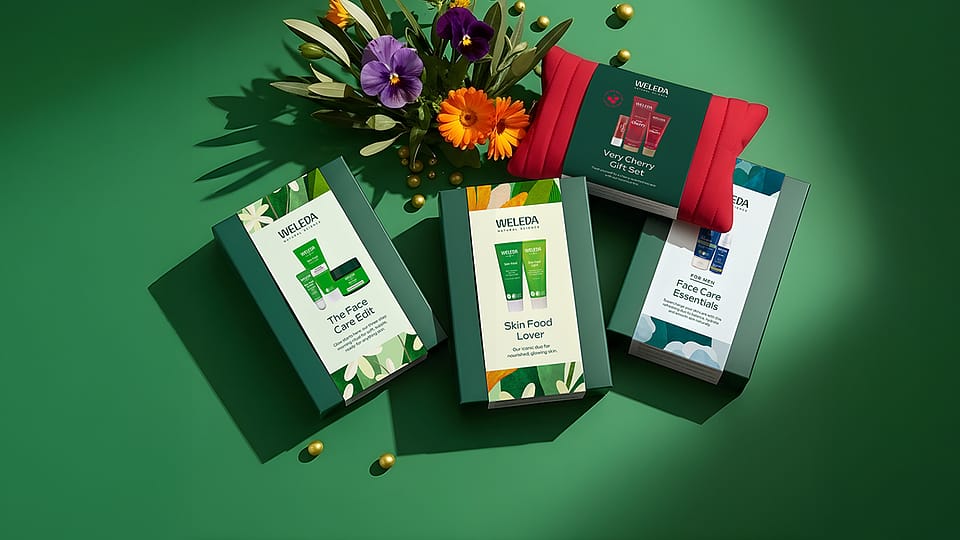What we need to know about the soil condition
Humans, animals and plants depend on healthy soil
Soil is the foundation of agriculture. Agronomist, farm educator and soil expert Dr. Ulrich Hampl explains how the tiniest creatures play a role in soil health and how even the untrained eye can recognise healthy, humus-rich soil.
Driving through the countryside recently, you will notice the many dark, bare fields. Is that typical for this time of year?
Ulrich Hampl: Unfortunately, yes. But soil should always be planted, even in winter. It’s always painful when I take a drive and see farmland like that. Bare fields in winter are open wounds in the ecosystem.
You have been working on soil health for 30 years. What does soil need to be healthy?
UH: Simply put, soil needs plants to grow on it to be healthy. Plants are food for soil, just as they are for us and animals in general. In nature, which humans do not cultivate, soil is never entirely bare; plants are always growing.
Bare fields in winter are open wounds in the ecosystem.
Can a non-expert tell anything about the soil condition simply by looking at a landscape?
UH: Yes: Try looking at the landscape through the eyes of a bee looking for flowers. Then it’s easy to see which landscapes are diverse and have something to offer – and which are not.
Large-scale cultivated landscapes often look monotonous, even when everything is green.
UH: That’s because there are often no clover plants or herbs growing at all; it’s only grass fertilised with manure or nitrogen. That will feed the cows but not the other animals living in and on the soil.
So visible wasteland also means underground wasteland?
UH: Yes. Low plant diversity means little nutrition for soil organisms. You can see this clearly under the microscope. Soil from monoculture farms has much less biodiversity than soil from organic, regenerative farms.
So life in the soil is starving to death, so to speak.
UH: Exactly, because, like us, it needs energy-rich food. I always tell farmers: Even if you don’t have a barn, you have to grow fodder for animals. Namely, for your underground animals, for the soil life.
How do plants nourish life in healthy soil?
UH: Plants absorb sunlight through their leaves, and together with water and carbon dioxide, they convert it into energy. This process is called photosynthesis. The plants release some of these substances into the soil through their roots.
Soil humus content is a key measure of soil health. In recent decades, it has declined.
Can you explain how that works?
UH: The plants exude energy-rich compounds through their roots and constantly produce fine roots, which they shed, providing food for soil organisms. We need to ensure that plants are rooted in the soil, and that soil life is nourished in its diversity.
Is it possible to measure soil health?
UH: Humus content is a key measure of soil health. In recent decades, it has declined. It is already critically low in arable soils; this was shown by a humus survey conducted by the German Ministry of Agriculture. For farmers, I recommend the time-honoured spade diagnosis to assess soil health. Healthy soil is teeming with life, resulting in a crumb structure that is easy to recognise.
Why have monocultures gained the upper hand in agriculture?
UH: To put it bluntly, it’s because food has to be cheap. That’s only possible when you grow it in large quantities, using mineral fertiliser and pesticides. The downside is that there are relatively few major crops left, namely, wheat, sugar beet, corn and barley. There are ever fewer species, varieties and intercropping. The soil reacts to this simplicity with strong weed growth, which people counter with herbicides. With this cultivation method, you can produce mass yields – or rather, you used to because it’s gradually becoming more challenging to do so.
What does that do to soils in the long run?
UH: Soils are losing more and more humus – this is bad in many ways. Humus protects against soil erosion, for example. And erosion protection is increasingly urgent because of climate change and the increase in heavy rains that wash away the soil. Humus-rich soil is not only more stable it can also store water better – that’s very helpful during long periods of drought.
There are fewer and fewer farmers. So those who are still around are farming larger and larger areas.”
Long periods of drought are one of the dangerous changes caused by climate change. That and heavy precipitation will pose major challenges to agriculture. So, happy soil is humus-rich soil?
UH: Definitely. Soil needs vitality and stable structures to absorb and store water like a sponge. With a stable sponge structure, soil can much more flexibly handle both wet and dry conditions. The feedback we received after the prolonged drought in 2018 confirmed this.
The use of heavy agricultural machinery also takes its toll on humus. The extreme weight causes soil compaction. Why have these machines become so big and heavy?
UH: There are fewer and fewer farmers. So those who are still around are farming larger and larger areas. Understandably, larger machines are in demand. The resulting soil compaction is another major problem.
How can we change things for the better?
UH: Organic farming! (Laughs) I am always very disappointed when this is not well communicated in politics. After all, organic farmers have had answers to all these questions for decades. They do not use chemical and synthetic fertilisers, which means they must ensure that the soil provides yields on its own. That’s why they care so much about soil fertility. The answer to that is crop diversity. Ideally, you have crop rotations, not with three, but about seven crops that grow one after the other. This includes intercropping and using green manure to actively establish and support biodiversity in the fields. It also includes tolerating some weed growth, meaning natural plants that grow along with the chief crops.
Does this mean that it’s better to leave weeds standing?
UH: Admittedly, the farmer’s art is to keep the principal crop and weed growth in balance, and in a way that the harvest from the principal crop is sufficient.
What else is good for the soil?
UH: If possible, it is beneficial to combine organic farming with animal husbandry. Fodder plants have strong, deep roots. Organic fertiliser can also be used to maintain the soil’s humus content. In organic farming, there is already an awareness of the benefits.
Biodynamic farming uses special soil preparations. Are soils on those farms even healthier?
UH: Demeter farmers would say: Of course! (laughs) They do add something on top of organic farming in various respects. The biodynamic preparations, for example, aim to support growth forces and soil life and bring these processes into balance in healthy soil. One of the most important preparations is horn manure. Then there is horn silica, which enhances the sun’s ripening effects, to put it simply. Finally, there are the compost preparations. They help strengthen the balance of the organic fertilisers to benefit the soil as much as possible.
The costs that we have because of nitrates in our drinking water should be added on to the price of conventionally farmed products
Our food is always available in unlimited quantities, and prices are stable. What signs can even the layperson see that soil health is in decline?
UH: That’s an excellent question. Crop failures do not currently lead to higher prices in our country; we are not there yet. We are still a long way from the true cost of food. Those costs should be added to the price of conventionally farmed products. Thanks to conventional agriculture, we have nitrate in our drinking water and pesticides that endanger our health. People who know about these issues need to address them and increase public awareness.
The Soil Fertility Fund
Even in organic farming, farmers are often under so much pressure that soil health does not get the attention it needs. The Soil Fertility Fund of the Swiss Organic Foundation provides 30 Demeter and organic farms in the Lake Constance region financial support and expert advice. That gives them the freedom to finally care for their soil the way they want to. Other goals include fostering dialogue among participants, for example, through specialised training, and raising public awareness. Following an initial pilot phase, the Soil Fertility Fund may continue through 2024.
Dr. Ulrich Hampl
soil expert
Dr. Ulrich Hampl is an agronomist, farm educator, and one of four project leaders at the Swiss Organic Foundation (Bio-Stiftung Schweiz).
